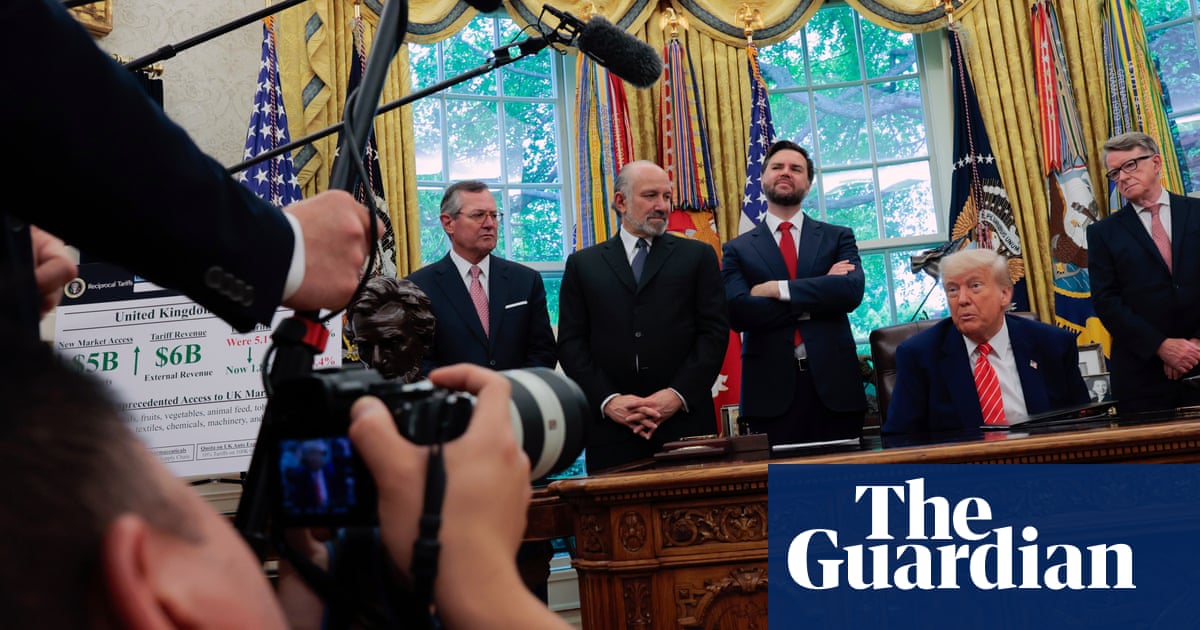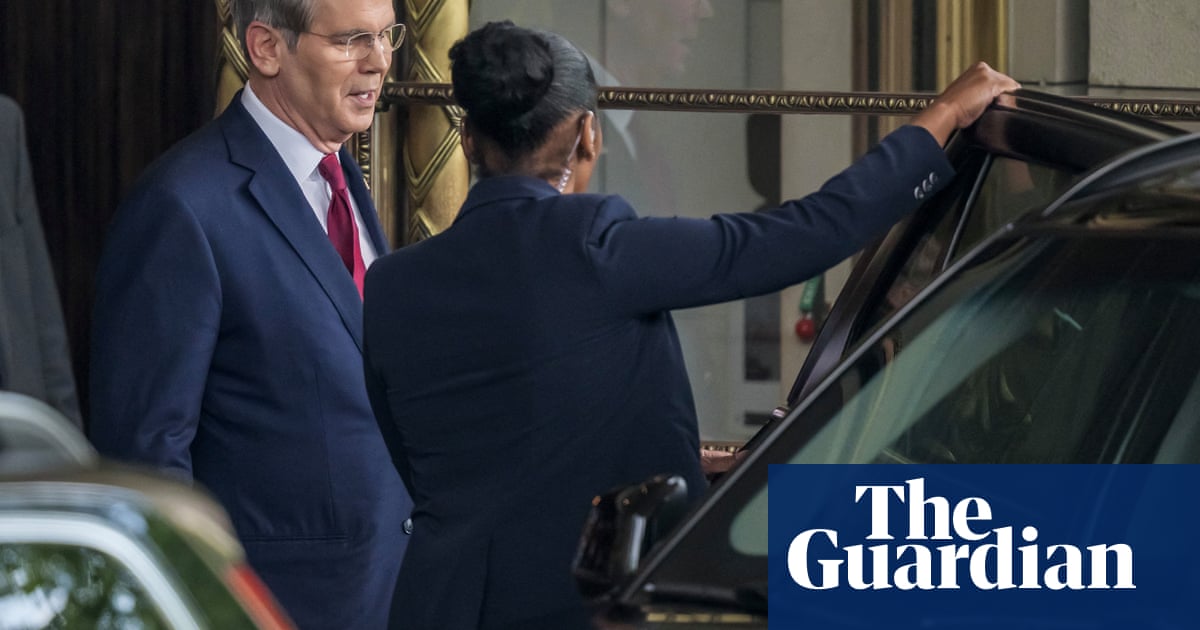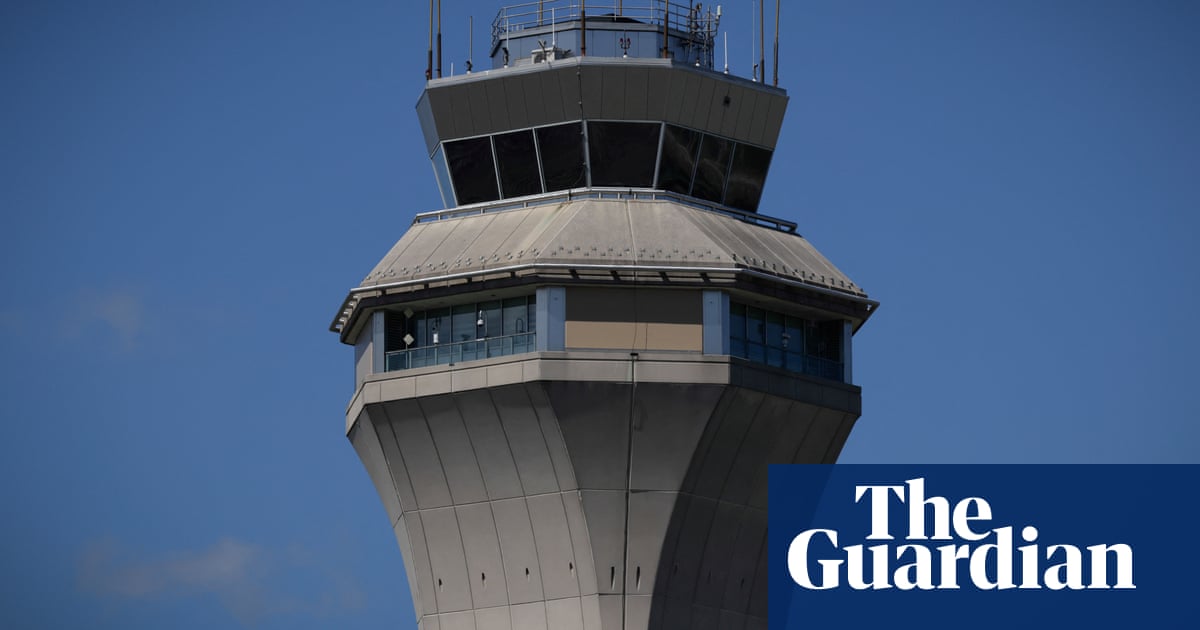Jeremy Wood thought he was safe from the shuttering of federal government diversity initiatives that he expected to start as soon as Donald Trump was sworn in.
A Raleigh, North Carolina-based career civil servant in the US agriculture department, Wood had been among those tasked with implementing policies ordered by Joe Biden to curtail discrimination on the basis of race, sexual orientation and gender identity in the federal government.
Weeks before Trump took office, he moved to a completely different job in the department in anticipation of Trump ordering a halt to such programs, expecting to continue his career.
Instead, he and colleagues across federal departments received letters two days into Trump’s second term telling they that they were being placed on leave and faced potential firing, not “for any disciplinary purpose”, the document read, but simply because they had worked on programs intended to diversify the federal workforce and ensure its resources were accessible to all Americans across the government’s vast operations.
“[It] seems really disciplinary,” Wood said. “If the idea is to increase government efficiency and delivering our programs faster and better, taking away the workforce that’s doing it is not the greatest way.”
Immediately upon assuming office, Trump took a wrecking ball to his predecessor’s efforts by signing an executive order banning all federal diversity, equity, inclusion and accessibility (DEIA) programs. The order is still being implemented, but in the days since, the state department’s Foreign Service Institute suspended access to thousands of pages of training materials related to DEIA, and the Internal Revenue Service deleted any mention of the words “diversity”, “equity” and “inclusion” from its procedural handbook, including from anodyne passages on taxes and finance.
The most immediate impact of the order was on the employees who had worked on the programs and were ordered put on leave – even if they had already moved on to different jobs.
“This is not comparable to anything we have seen in decades,” said Randy Erwin, president of the National Federation of Federal Employees. Though the order does not appear to have affected his union’s members, several non-members have made contact about organizing since it was handed down.
“In any recent administration, even Trump’s first administration, we did not see civil servants be taken out in this kind of manner. This is unprecedented and, frankly, a scary action being taken,” Erwin said.
Those swept up by the order defended their work, saying they helped the civil service become more representative of America’s diverse population.
“You want to really build trust and make sure these agencies are able to reflect the communities that they’re working with,” said an employee put on leave by Trump’s order. Speaking on condition of anonymity because they feared retaliation, they said they worry the broad firings will undermine the ability of their agency to do its job.
“The role of the government employees is to be that unwavering force through administration changes. We are supposed to be the constant and to continue that continuity of services for people,” they said.
“Obviously, a new administration comes in, visions change, but to just kind of track us down like this, it feels very retaliatory.”
The purge of civil servants who worked on DEIA initiatives comes as the Trump administration moves to dramatically shrink the federal workforce writ large, using tactics unusual for its bureaucratic culture.
The president put Elon Musk in charge of what he is calling the “department of government efficiency”, an effort to downsize the federal government that the multibillionaire Tesla CEO has said will involve “mass head-count reductions”. That effort appeared to begin in earnest this week, when the office of personnel management (OPM), which functions as the government’s human resources department, offered deferred resignations to much of its 3 million-strong workforce, and said employees who accepted would get paid for eight months and wouldn’t have to work – an unheard-of deal for civil servants.
For former staffers of DEIA programs, the Trump administration simply ordered them out. The OPM’s acting director, Charles Ezell, told agency heads anyone who worked on such programs up to 5 November – the day of the presidential election that Trump won – should be targeted.
The OPM also circulated an email template for federal employees that encouraged them to report colleagues who were continuing to do DEIA-related work. “These programs divided Americans by race, wasted taxpayer dollars, and resulted in shameful discrimination,” the message read.
Jenny Mattingley, vice-president of government affairs at the Partnership for Public Service, which advocates for civil servants, acknowledged that reassigning employees is a new administration’s prerogative, but objected to Trump’s blanket approach.
“Each administration has priorities around various policy issues, and DEI is one of those,” Mattingley said.
“What is concerning is holding non-partisan career employees accountable for implementing the policy choices of the last administration, which is the role they play in every administration, including this current one.”
Everett Kelley, the national president of the American Federation of Government Employees National, the largest federal union, said the DEIA ban undermines programs that had shown results.
“Over half of the 642,000 veterans serving in our federal government have service-connected disabilities. One important role diversity, equity and inclusion programs perform is ensuring the workplace is welcoming and accessible to these veterans so a diverse workforce can harness its collective strengths to better serve the public. Eliminating these programs will unfairly harm veterans wearing their second uniform in service of their country,” Kelley said.
“Ultimately, these attacks on DEIA are just a smokescreen for firing civil servants, undermining the apolitical civil service and turning the federal government into an army of yes men loyal only to the president, not the constitution.”
Those put on leave await a reduction in force, the procedure for letting federal employees go.
“There’s a lot of hope that this still can be salvaged in a way that those of us that have dedicated our careers and livelihoods to supporting the American public will have a chance to continue to do that,” said another federal employee who was on leave, speaking on condition of anonymity.
“For now, we’re just waiting, hoping, praying that there’s some type of resolution that continues to allow us to do what we love, and that’s supporting the American people.”

 3 months ago
43
3 months ago
43













































